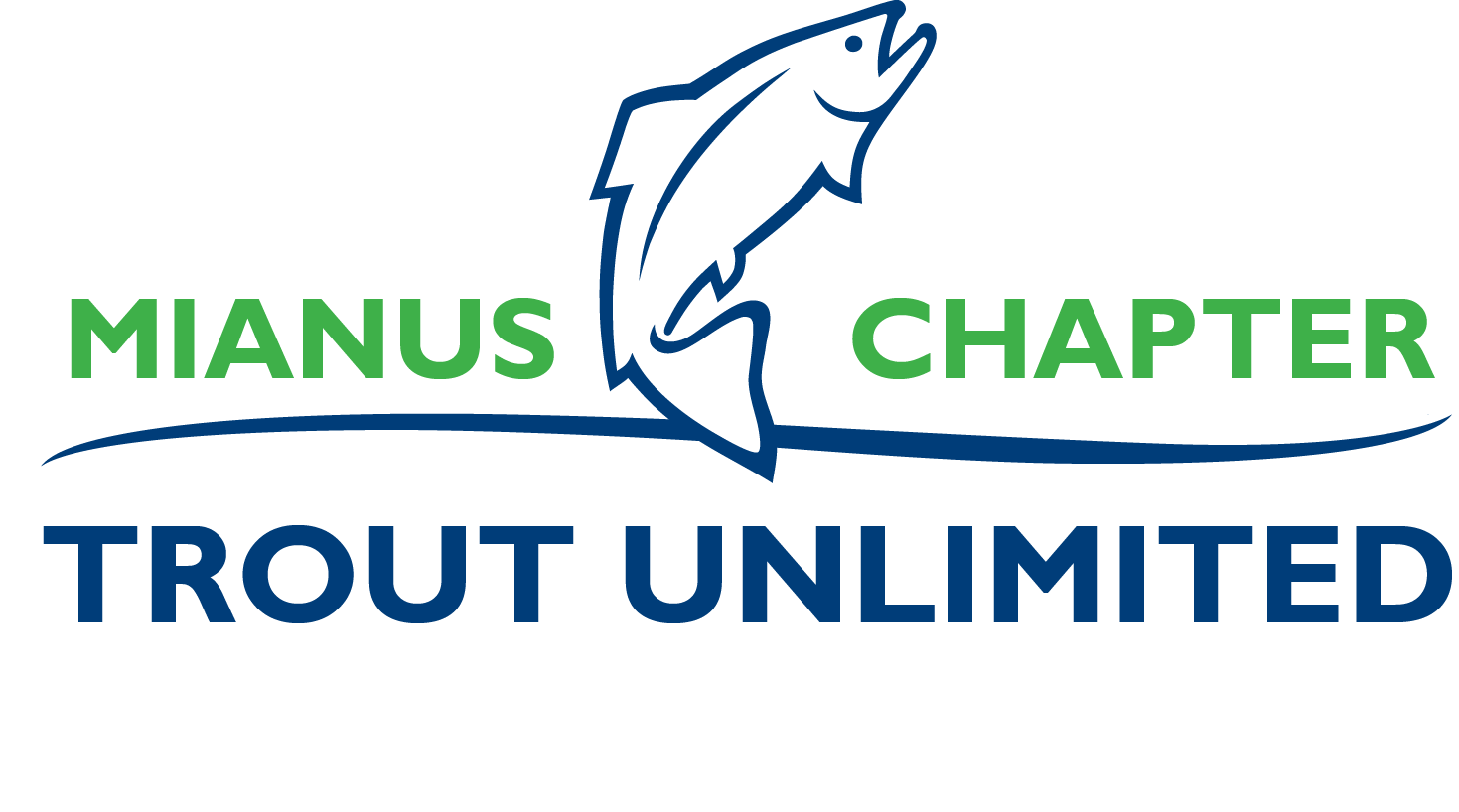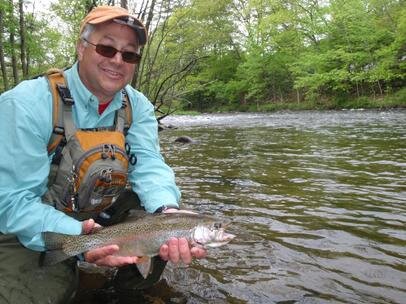Farmington River
About the River
The Farmington River that most fly anglers talk about is the West Branch of the Farmington River, in particular the section from Riverton downstream to New Hartford. This section of river, which has the highest trout population density in the state - rivaling some western waters - is the product of a 200-foot-high dam which releases a fairly consistent flow of cold water year round. This is called a tailwater fishery.
The combination of the river's size and the release of 50-degree water from the bottom of the dam creates the ideal habitat for trout to thrive and grow. For Mianus TU members, the river is particularly important as a summer fishing stream, as it is often at its best when our rivers are at their lowest and hottest conditions. Even better, for the majority of chapter members, the river is just an hour and a half away. (The only problem with summer fishing on the Farmington are the frequent interruptions as canoers, kayakers and tubers float downstream.)
Additionally, access on the river is completely unrestricted in this section, which also includes two Trout Management Areas, the Upper TMA reserved for catch and release fishing with barbless hooks only. The Upper TMA, considered the best area for anglers, particularly those looking for dry fly fishing, runs from one mile above the Route 318 bridge downstream to the Route 219 bridge.
The river is heavily stocked with adult trout, with the average fish in the 12 to 14 inch range. Much larger trout, mostly brown trout, can be caught, with many fish over 20 inches hooked each season.
What to use
On the Farmington River, there is no problem using a long, heavy weight rod. Most anglers fish with a 9-foot, 5-weight rod, though some will use shorter, lighter rods when casting dry flies, and others will use longer, heavier rods when fishing nymphs or streamers.
Anglers planning a full day, weekend or longer on the river should bring a few rods and reels, and also an assortment of lines. While the Farmington is known for its prolific insect hatches and many dry fly pools requiring tactical casts and gentle presentations with floating lines and long leaders, in the deeper and faster pools and currents a sink tip line is recommended.
For leaders, it is best, also, to have an assortment when fishing the Farmington. For mid-summer dry fly fishing, many an angler has watched in frustration as their fly floats undisturbed through a thick pod of trout feeding on the surface. Because the Farmington is such a productive river, it receives a significant amount of fishing pressure and the trout quickly become experts at spotting an imitation fly among a sea of naturals. for dry fly fishing a 9-, 12- or even 15-foot leader in 6X through 8X is recommended. some anglers even go down to 10X to 12X on their tippet, though this makes it harder to land large fish.
When nymphing, a 9-foot 5X or 6X leader is adequate, and for streamer fishing a 9-foot 3X or 4X is the best choice.
While the basic flies (pheasant tails, hare's ears, wooly buggers, light cahills, sulphurs, hendrickson, griffith's gnats and the like) work well, what works best on a given day depends on what's hatching and what the trout are showing interest in. Local fishing shops and shops on the Farmington River will be able to point anglers in the right direction.



